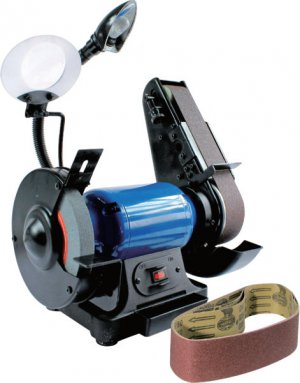Hozzie, my father used to keep a belt to be used for HSS. It also had a vacuum unit to try and catch all the dust, but it didn't exactly work perfectly.
I went to Lowes today, and the only comparable version with what I wanted was one by Ryobi. But the Ryobi, despite similar in price around here, has no lamp, much less Amperage, and some other issue that I can not remember now.
I'm still debating on getting an 8" over the 6", but I do like to keep things very portable. The 8" stuff is so much more heavier, which I know is sort of nice, but not so nice for people like me.
The Delta's I saw are much more pricy, but they have variable speed control, which seems interesting to me.
I was wondering if I could just change 6" and 8" wheels to something else for buffering work. As I'd like to buffer 8mm to 15mm jewelry items after cutting. But to be honest, with all the buffering and grinding I will be doing, I will probably just end up needing a whole new other unit anyhow, so I guess trying to go for a 2-in-1 unit is not really going to help me any.


